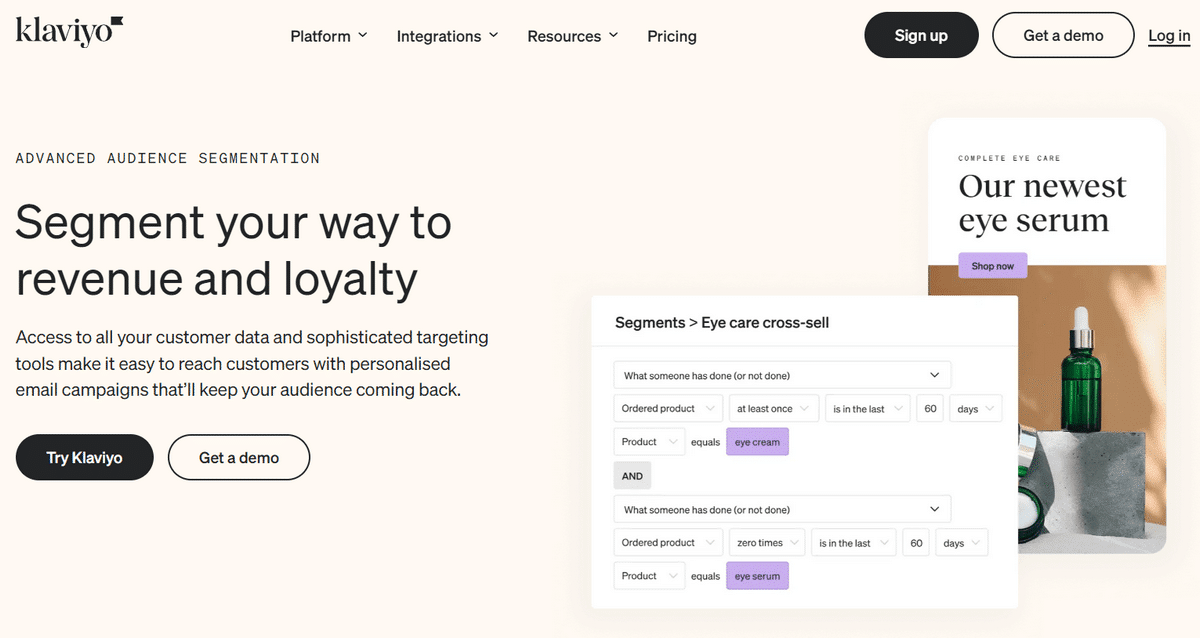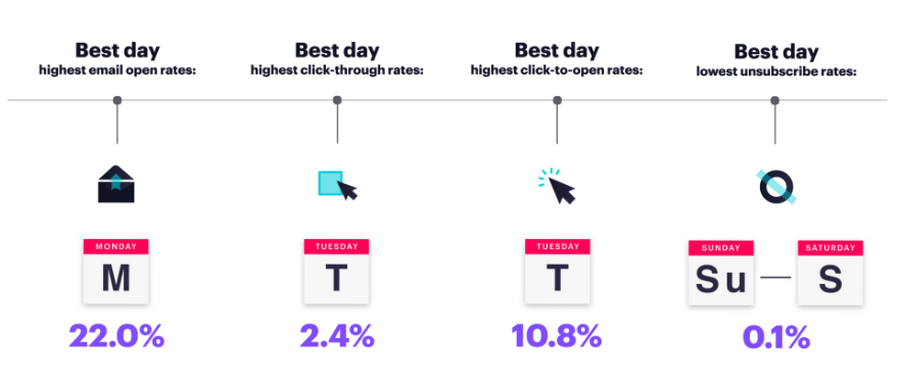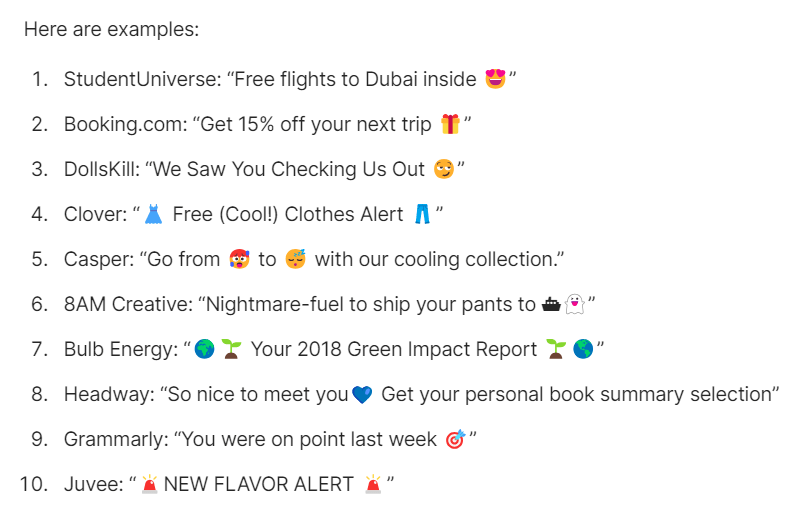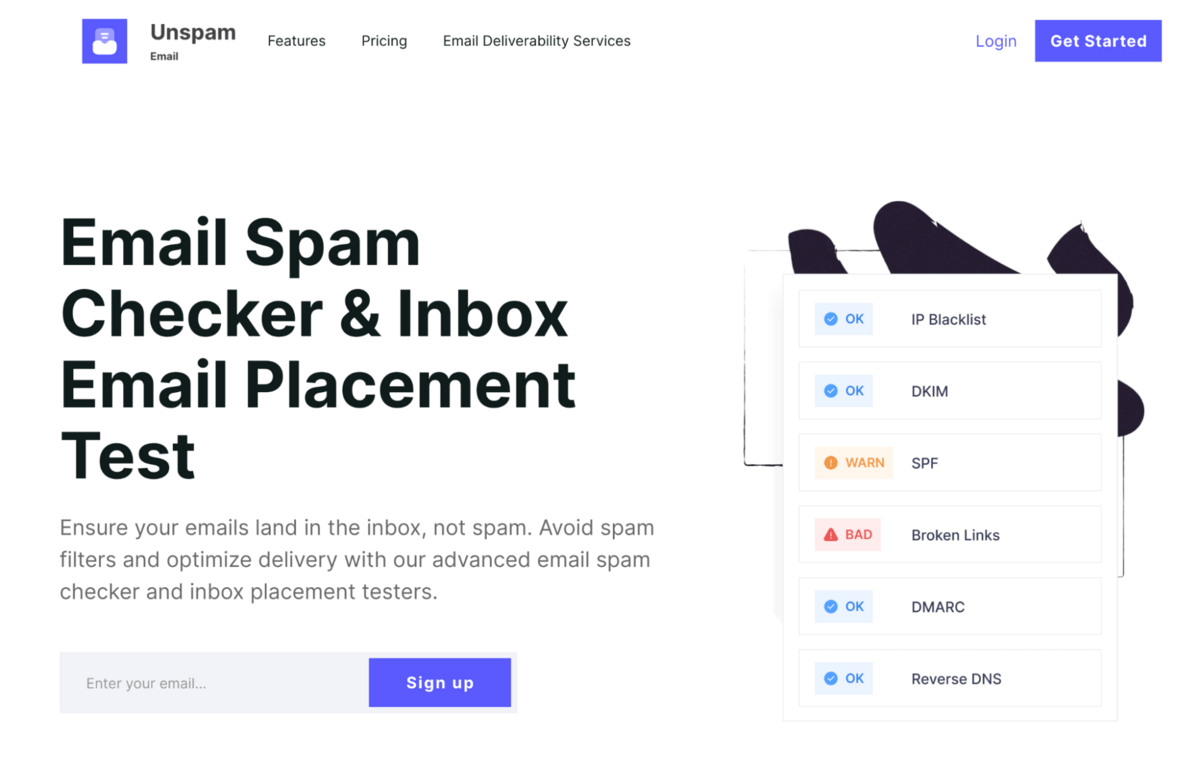
Did you know that over 75% of marketers have seen an increase in email engagement over the last year? According to studies done by Statista, the number of daily email users is growing fast. It’ll reach the 4.6 billion mark by 2025 and generate almost 11 billion dollars by the end of this year.
This means that email marketing can still have a big impact. With such huge potential, the importance of this communication channel is undeniable.
But success takes more than writing catchy emails and sending them to a random list of customers. Today we’ll explore how to develop an email newsletter that’ll keep your customers coming back for more.
Effortlessly export your Google Docs to WordPress with just 1-click.
Get Started Today
Newsletters are the bridge between the company and its customers. The more appealing they are to the audience, the more beneficial they’ll be.

(Image Source: Really Good Emails)
A personalized newsletter is more likely to receive a positive response. Positive reaction keeps the audience open to new emails from the brand. It boosts engagement and compels subscribers to recommend and share the brand with friends. This drives extra traffic to the website and generates new leads.
User-centric emails also help the brand connect with individuals by doing the following:
Newsletters that live up to subscribers’ expectations also influence key metrics. As a rule, the email your subscribers love has high open rates. This leads to higher deliverability rates and a better sender’s reputation.
Your reputation plays a crucial role in successful email marketing campaigns. It gets ISPs on your side, allowing you to avoid spam filters.
Pro Tip: Make sure your newsletter is shareable on different social media platforms. Include share buttons and links in each newsletter, along with subscribe options for new readers to subscribe if they wish. Utilize newsletter platforms to streamline the process, ensuring your emails are optimized for deliverability and engagement.
So, how do you make a newsletter that subscribers will love? The surprising thing is this isn’t only about delivering value. The success lies in nuances that engage through email content. They leave a long-lasting impression that establishes an emotional connection with the company.
There are a dozen factors that make it happen. Yet, these eight aspects underpin everything. They create a solid foundation to pave your way to the customer’s heart.
To deepen your connection with subscribers further, consider using referral program tools to encourage them to share your content with their networks. Platforms like ReferralCandy not only simplify the process of tracking and managing referrals but also make it easy for subscribers to invite others. This approach builds your audience organically and reinforces trust and loyalty among your existing readers.
Did you know that segmentation is the most effective email marketing strategy? The more segmented your email list is, the likelier you are to reach the right person with the right message at the right time. Having groups of subscribers with similar needs and preferences underlies success.
Identifying market segments involves a deep understanding of the target audience. Follow these basic steps:
At the end of the day, you should have well-identified segments.

Creating granular segmentation is half the battle in your technical preparations for crafting an email newsletter your subscribers will love. Another half of the battle requires finding the right email cadence.

(Image Source: Campaign Monitor)
Email cadence implies figuring out the ideal time and frequency to connect with a subscriber. It’s a tricky metric because personal factors like mood can influence it. Yet, studies show that the right email cadence has many benefits.
Benefits aren’t the only reasons why companies shouldn’t skip this step. Granular segmentation done at the previous stage isn’t enough. Often, individuals within the same audience have different preferences about the time and quantity of emails they want to receive. Finding the right email cadence makes segmentation more accurate and effective.
Determining the ideal email cadence for your subscribers starts with setting the right goals. The first thing to do is to understand what you want to achieve. Then, determine what type of email marketing campaign you need to run. After that, revisit your already segmented list. Your task is to break it into smaller groups with the same behavior patterns.
It takes time to analyze and identify email cadence for individuals. So, don’t rush. Note that events like seasonal sales and holidays will skew the data. Therefore, watch your customers throughout the year to tweak email cadence appropriately.
If you experience problems with finding the right email cadence, you may ask your subscribers. Let them decide what frequencies, times of the day, and ideal times to send email blasts suit them best. This isn’t the ideal solution but can be a good starting point.
According to eConsultancy, over 70% of marketers see targeted personalization as a tool to increase customer engagement. Experian discovered that personalized emails deliver 6x higher transaction rates. With such impressive stats, it’s hard to oversell personalization. When done right, personalization achieves several crucial goals:
Email personalization is a powerful thing. Even though it requires significant resources and effort, it results in increased conversion rates. In the end, it’ll be cost-effective. There are different approaches to creating relevant and relatable-to-the-person email through personalization. The popular option is to use the recipient’s name and personal greeting instead of a generic “Hello.”
But, if you want to unlock the potential of this marketing tool, you need to dive much deeper. The time-proven tactic is to incorporate valuable content. It involves creating custom content for each person based on the recipient’s data. Check out Why and How You Should Be Writing Segmented Content by Ana Gotter to nail email body copy.
Personalization should also influence the subject line and segmentation. A company may increase the open rate by adding relevant or engaging details in the headline. Personalized segmentation helps the company send emails targeted at each group. It delivers content relevant to their specific needs and expectations.
Last but not least, the key to successful personalization is gathering as much information as possible. Collect only relevant data. Use professional tools and automation to process it efficiently. This way, you’ll create targeted emails for each subscriber without losing precious time.

To ensure these efforts pay off, it’s also crucial to maintain email deliverability with tools like SPF (Sender Policy Framework), which helps ensure your messages reach the inbox instead of the spam folder.
People judge a book by its cover; the subject line is that cover on email channels. As the first thing a recipient sees, it underlies the campaign’s success. It has the power to make your subscribers love the newsletter.
At first glance, it’s a short preview that tells the reader the message. It helps readers to decide whether the content is worth their attention and time. Yet, many professional marketers know that the subject line is more than a regular headline. It’s a powerful tool in persuading recipients to open the email.
Did you know that the subject line alone compels over 40% of recipients to open an email? Consider it your first and only shot at connecting with readers. It strikes a chord with a few words and builds anticipation when done right.
The tactics for crafting a subject line that your subscribers will love vary. It depends on several factors. First, the goal of the campaign sets the direction. Second, the segment adapts to customers’ preferences.
Follow these best practices to find your way to subscribers’ hearts right at the doorstep:

Design influences how viewers think, feel, and make decisions. It’s a powerful marketing tool.
For instance, it communicates the message and creates long-standing impressions. It clarifies concepts and illustrates ideas. It also attracts customers and underlies an impressive user experience.
Unlocking the full potential of email design can be tricky.
An email has little space to allow artists’ imaginations to run wild. And unfortunately, email readers only support limited technologies.
As a result, email designers have a 600px width layout and a few techniques and approaches they can use. They also face the limitations of older email readers and mobile phones. However, effective emails with impressive designs are still possible with some creativity and innovation.
Postcards is a perfect example of a design tool developed to enhance email design and improve your email campaigns. It has a hundred design blocks made with the latest trends and standards in mind.
Marketers can bring any idea to life within minutes. The best part is that it has an intuitive drag-and-drop interface – anyone can handle it.

When assembling design in Postcards, adopting the following best practices is crucial.
Last but not least, hold the attention of your audience with visuals. From wide-screen illustrations to tiny icons, they do several crucial tasks.
An extra tip: Add an email signature banner to highlight a special offer or promotion, boosting conversions and driving action.
Accessibility is a seamless contributor to exceptional user experience. Not only does it address issues for people with disabilities, but it also demonstrates care for everyone.
For instance, it ensures an optimal contrast between background and foreground. Everyone appreciates easy readability in email.
Another pillar of accessibility is to provide equal access to information. For example, using a responsive layout so users may enjoy the content regardless of device.
You can also offer added accessibility by providing text-to-speech and voice-to-text options. These allow people with visual impairments or who are hard of hearing to understand content easily.

If there is one thing to add to your email design, it should be interactivity. Interactivity is a secret ingredient that can be a game-changer for brands. It achieves many goals:
Sadly, not all email readers support these features.
For instance, Outlook is notorious for its inability to display interactive elements, and mail clients for Mac also experience similar issues.
Fortunately, Gmail supports interactive technology, and most people have Gmail accounts.
Thus, when introducing interactivity in email design, follow these best practices:

(Image Source: OpenJS Foundation)
Marketers have a lot on their plates. From audience segmentation to content creation, AI can help, but not as much as a team of talented people can, as they’ll help keep the marketing strategy running smooth, and sales funnels full.
Employing marketing automation is one way marketers can streamline their workflows and maintain high quality and increased output. The right tools make all the difference.
Over 90% of marketers agree that marketing automation helped them achieve their objectives.
Consider cold email software, such as:
Their personalization features help tailor emails to specific market segments. Plus, they provide analytics data to track the progress and success of email campaigns. With this data, marketers can make the necessary adjustments for better results in the future.

Email design builders are other integral tools for creating winning email campaigns. They offer modern styles, email templates, responsive blocks, accessibility features, and an intuitive interface. These features allow marketers to design and craft emails that stand out from the hundreds of other emails recipients see in their inboxes every day.
You may ask why this technical point is in the guide on creating email newsletters your subscribers love. The answer is simple. If your email ends up in a spam folder, it’s a waste of all your efforts.
This stage involves many tasks. You must authenticate your email, add a digital signature, check your IP address against blocklists, etc.
Yet, everything starts with Unspam. It’s a service that calculates inbox placement chances through several crucial tests. It does the following:

Working in tandem with Unspam, marketers can be sure that their readers will receive the digital newsletter they love. This means their efforts and money invested in email campaigns will be well spent.
Almost 65% of startups choose email marketing to connect with their target audience. This oldie-but-goodie means of communication continues to thrive as it bridges the gap between businesses and customers.
Our guide has uncovered the best practices and tips on making the most of email marketing and email newsletters in particular. By following best practices, knowing your audience, testing, and adjusting, you can create email newsletters your customers will love and email campaigns that’ll continue driving conversions.